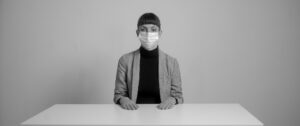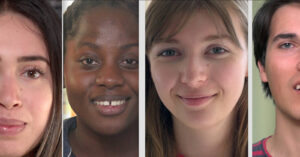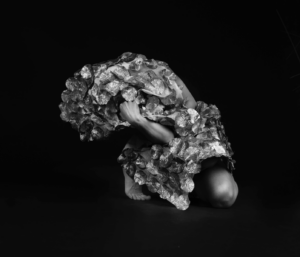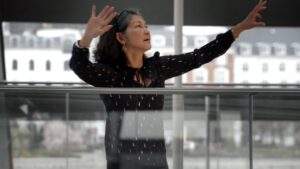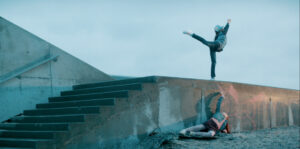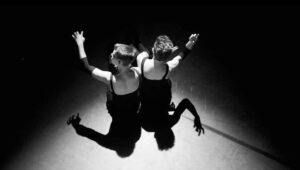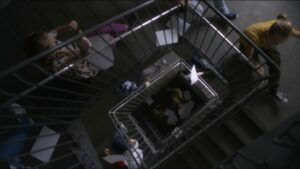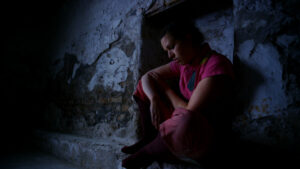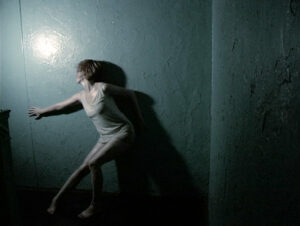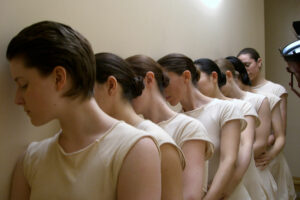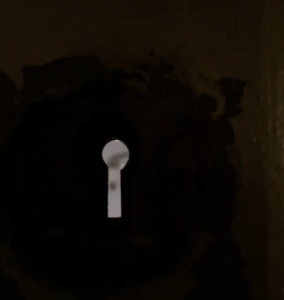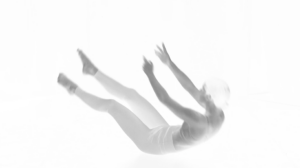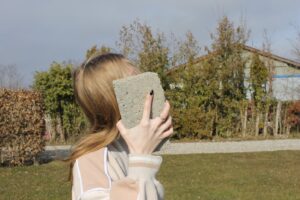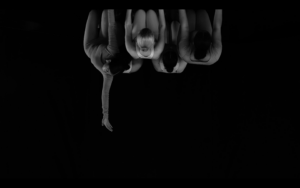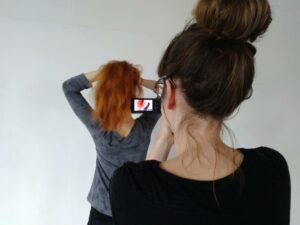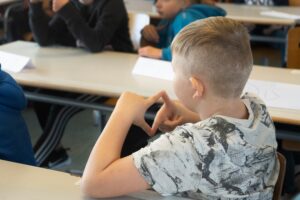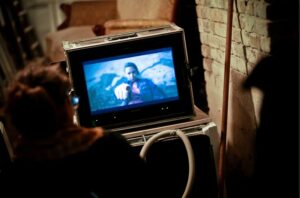Maia Elisabeth Sørensen
Dance filmmaker / Curator / Educator
The stories I tell evolve around my curiosity of how people experience the world differently
Maia Elisabeth Sørensen (1980) is a dance filmmaker and curator from Denmark with a background in dance and choreography.
Graduated from Martha Graham School of Contemporary Dance (NY) in 2007 after completing the post-certificate program with focus on choreography. Her graduation work was her first dance film NUDE, which earned her a cultural grant from American Scandinavian Society in New York. Since then she has specialised in dance film as a director/choreographer, editor and performer, as well as writing her own scripts using movement as a core for narrative storytelling, whether fiction, documentary or choreographic dance films.
In 2014 Maia won the ‘New Creator/Innovation prize’ at the international dance film competition IDILL for Det Skal Danses Væk, and the category ‘Best Experiment’ at Ekko Shortlist Awards 2014 for the dance film Satellit. Satellit also received two nominations for “Best Editing” and “Best Original Music”. Her debut documentary “Nothing Matters When We’re Dancing” won the audience award for best documentary at Cinedans Dance on Screen Festival in 2018 and her collaboration with Russian filmmaker Kristina Daurova “How To Be a Perfect Human” earned her a nomination for best documentary at Ekko Shortlist Awards in 2022.
In 2021 Maia was selected for the prestigious program Berlinale Talents at Berlinale Film Festival (DE) based on her work with dance, documentary and autism.
Her films has traveled to festivals all over the world, amongst them Dance on Camera (US), Cinedans Dance on Screen Festival (NL), Trailerpark Music and Art Festival (DK), VideodanzaBa (AR), Festival de video danse Bourgogne (FR), Dança em Foco (BR), KinoKino Short Film Festival (NO), SESIFF (KR), and more, as well as being selected for online platforms such as Numeridanse TV (FR), Ekko Shortlist (DK), and local TV stations.
In addition to her own works she has been commissioned to make short films for Aaben Dans (DK), Daily Fiction (DK) and Dansehallerne (DK).
In 2022 she founded a new platform for dance film together with administrator and advisor Jens Christian Jensen and film director Helle Pagter. The goal is to disseminate the art form of dance film to audiences and professionals through different activities, such as screenings, masterclasses and exhibitions. Currently they are collaborating with Cinemateket (DK), Danish Dance Theater, The Danish National School of Performing Arts and Copenhagen Stage.
Maia works as a dance film consultant, teacher, and facilitator of dance film activities. Previously freelanced for ScreenMoves/Dansehallerne (DK) and the international dance film competition 60secondsdance.
“In my films I tell stories through movement, both as a visual aspect in front of the camera and as a tool for camera, editing and sound. Whether I work with documentary, fiction or art film, my aim is to give the audience a kinaesthetic experience.
The stories I tell evolve around my curiosity of how people experience the world differently. Sometimes, these differences cause misunderstandings resonating with loneliness, beauty and humor, which is reflected in most of my works. I like the balance between sadness and humor, as this contrast creates a space for a nuanced emotional experience.
The dance film language offers a sensuality, in a different way than other languages such as spoken word, text or photography. I use the dance film language to create surreal filmic universes and/or scenes. I often use specific color schemes, original choreography, -music and -script mixed with elements from pop culture and references to old cinema and/or performance art.
In more recent years I have worked with the documentary genre. I find that the combination of the dance film language and documentary filmmaking offers a new form of storytelling, that has not been explored enough.
In my current work I am exploring how to portray people through a combination of staged choreography, documentation of their lives and a cinematic language that emphasises their body language. Part of the work is to collaborate with the person I portray to get as close to their perspectives on their world as possible. This is my attempt to understand the world better.”

